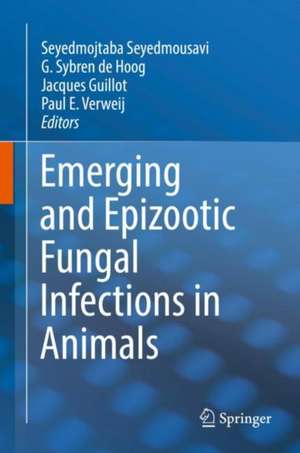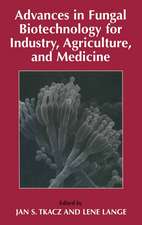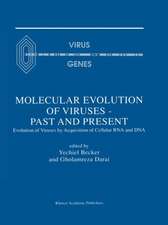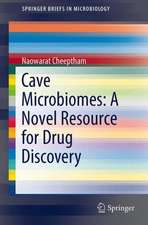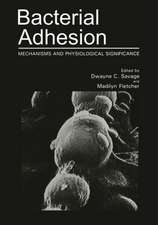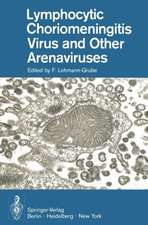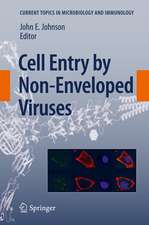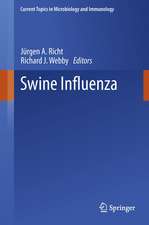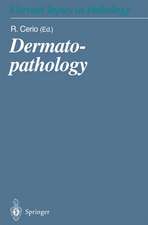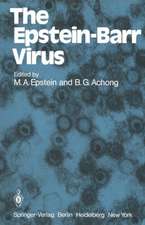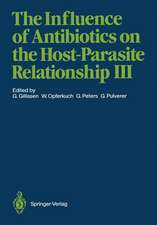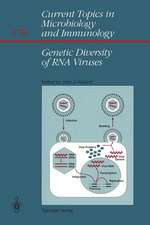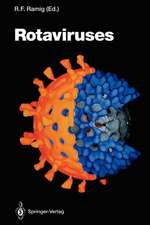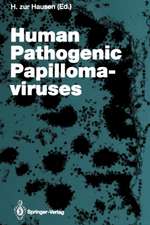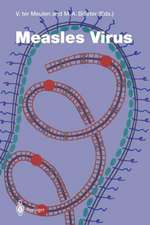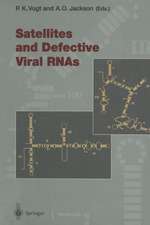Emerging and Epizootic Fungal Infections in Animals
Editat de Seyedmojtaba Seyedmousavi, G. Sybren de Hoog, Jacques Guillot, Paul E. Verweijen Limba Engleză Hardback – 29 iun 2018
In an introductory chapter, the reader will be provided basic information on fungal infections that are non-transmissible, infections from a common environmental source known as sapronoses, and zoophilic fungal pathogens in various animal species and populations, worldwide
Chapter 2 details the vocabulary and terminology that is required in the scientific literature in order to maintain clarity of expression to the field of Mycology. Chapters 3 to 9 discuss epidemic mycoses with a reservoir in animals and occasional outbreaks, including dermatophytoses, coccidioidomycosis, histoplasmosis, paracoccidioidomycosis, adiaspiromycosis and similar diseases, blastomycosis, and paracoccidioidomycosis ceti (lacaziosis/lobomycosis).
Chapters 10 to 15 comprise emerging mycoses in animals that include feline sporotrichosis, lethargic crab disease, emergence of C. gattii in animals and zoonotic potential, white-nose syndrome in hibernating bats, chytridiomycosis in frogs and salamanders and aspergillosis in cats.
The last chapter is about treatment possibilities, antifungal use in veterinary practice, and emergence of resistance.
The book will address medical and veterinary mycologists, microbiologists, veterinarians, infectious disease specialists, epidemiologists, ecologists, public health scientists from academia and industry as well as graduate students, PhD students and postdocs in the field.
| Toate formatele și edițiile | Preț | Express |
|---|---|---|
| Paperback (1) | 1023.65 lei 38-45 zile | |
| Springer International Publishing – 25 ian 2019 | 1023.65 lei 38-45 zile | |
| Hardback (1) | 1051.63 lei 38-45 zile | |
| Springer International Publishing – 29 iun 2018 | 1051.63 lei 38-45 zile |
Preț: 1051.63 lei
Preț vechi: 1106.97 lei
-5% Nou
Puncte Express: 1577
Preț estimativ în valută:
201.26€ • 208.52$ • 167.96£
201.26€ • 208.52$ • 167.96£
Carte tipărită la comandă
Livrare economică 17-24 martie
Preluare comenzi: 021 569.72.76
Specificații
ISBN-13: 9783319720913
ISBN-10: 3319720910
Pagini: 527
Ilustrații: X, 406 p. 80 illus., 70 illus. in color.
Dimensiuni: 155 x 235 mm
Greutate: 0.95 kg
Ediția:1st ed. 2018
Editura: Springer International Publishing
Colecția Springer
Locul publicării:Cham, Switzerland
ISBN-10: 3319720910
Pagini: 527
Ilustrații: X, 406 p. 80 illus., 70 illus. in color.
Dimensiuni: 155 x 235 mm
Greutate: 0.95 kg
Ediția:1st ed. 2018
Editura: Springer International Publishing
Colecția Springer
Locul publicării:Cham, Switzerland
Cuprins
Section 1: Definitions, Terminology, Methods for classifications.- 1.1. Emerging, pseudo-epidemic, endemic, zoonoses, dynamic, population genetics, epidemiology.- Section 2: Epidemic mycoses in animals.- 2.1. Sporothricosis.- 2.2. Coccidioidomycosis.- 2.3. Histoplasmosis.- 2.4. Dermatophytoses in animals.- 2.5. Epidemics of black moulds and melanized yeasts in animals.- 2.6. Penicilliosis.- Section 3: Emerging Mycoses in animals.- 3.1. Cryptococcus gattii in animals.- 3.2. Bat-white nose syndrome.- 3.3. Chytridiomycosis.- 3.4. Oomycetes in fish.- 3.5. Emmonsia and adiaspiromycosis in animals.- Section 4: Genetic changes in fungi and evolution of resistance.- 4.1. Antifungal treatment in animals and problem of resistance.
Recenzii
“This unique reference is a much needed update in the ever-changing field of medical and veterinary mycology and focuses on established and emerging fungal infections in animals. … The book is written for anyone with an interest in fungal disease, namely scientists, postdocs, and graduate students in fields such as medical and veterinary mycology, epidemiology, ecology, public health, and infectious disease.” (Kathryn M. Fleming, Doody's Book Reviews, December 14, 2018)
Notă biografică
Seyedmojtaba Seyedmousavi
Laboratory of Clinical Immunology and Microbiology, National Institute of Allergy and Infectious Diseases (NIAID), National Institutes of Health (NIH), Bethesda, Maryland, USA
G. Sybren de Hoog
Center of Expertise in Mycology RadboudUMC/CWZ, Nijmegen, and Westerdijk Fungal Biodiversity Institute, Utrecht, The Netherlands.
Jacques Guillot
Department of Parasitology, Mycology and Dermatology, and Dynamyc Research Group, EnvA, UPEC, Ecole nationale vétérinaire d’Alfort, Maisons-Alfort, France
Paul E. Verweij
Department of Medical Microbiology, and Center of Expertise in Mycology RadboudUMC/CWZ, Radboud University Medical Center, Nijmegen, The Netherlands
Laboratory of Clinical Immunology and Microbiology, National Institute of Allergy and Infectious Diseases (NIAID), National Institutes of Health (NIH), Bethesda, Maryland, USA
G. Sybren de Hoog
Center of Expertise in Mycology RadboudUMC/CWZ, Nijmegen, and Westerdijk Fungal Biodiversity Institute, Utrecht, The Netherlands.
Jacques Guillot
Department of Parasitology, Mycology and Dermatology, and Dynamyc Research Group, EnvA, UPEC, Ecole nationale vétérinaire d’Alfort, Maisons-Alfort, France
Paul E. Verweij
Department of Medical Microbiology, and Center of Expertise in Mycology RadboudUMC/CWZ, Radboud University Medical Center, Nijmegen, The Netherlands
Textul de pe ultima copertă
The book will provide insights into epidemic and emerging mycoses in various animal groups. The different categories of pathogens and outbreak fungi are discussed.
In an introductory chapter, the reader will be provided basic information on fungal infections that are non-transmissible, infections from a common environmental source known as sapronoses, and zoophilic fungal pathogens in various animal species and populations, worldwide.
Chapter 2 details the vocabulary and terminology that is required in the scientific literature in order to maintain clarity of expression to the field of Mycology.
Chapters 3 to 9 discuss epidemic mycoses with a reservoir in animals and occasional outbreaks, including dermatophytoses, coccidioidomycosis, histoplasmosis, paracoccidioidomycosis, adiaspiromycosis and similar diseases, blastomycosis, and paracoccidioidomycosis ceti (lacaziosis/lobomycosis).
Chapters 10 to 15 comprise emerging mycoses in animals that include feline sporotrichosis, lethargic crab disease, emergence of C. gattii in animals and zoonotic potential, white-nose syndrome in hibernating bats, chytridiomycosis in frogs and salamanders and aspergillosis in cats.
The last chapter is about treatment possibilities, antifungal use in veterinary practice, and emergence of resistance.
The book will address medical and veterinary mycologists, microbiologists, veterinarians, infectious disease specialists, epidemiologists, ecologists, public health scientists from academia and industry as well as graduate students, PhD students and postdocs in the field.
In an introductory chapter, the reader will be provided basic information on fungal infections that are non-transmissible, infections from a common environmental source known as sapronoses, and zoophilic fungal pathogens in various animal species and populations, worldwide.
Chapter 2 details the vocabulary and terminology that is required in the scientific literature in order to maintain clarity of expression to the field of Mycology.
Chapters 3 to 9 discuss epidemic mycoses with a reservoir in animals and occasional outbreaks, including dermatophytoses, coccidioidomycosis, histoplasmosis, paracoccidioidomycosis, adiaspiromycosis and similar diseases, blastomycosis, and paracoccidioidomycosis ceti (lacaziosis/lobomycosis).
Chapters 10 to 15 comprise emerging mycoses in animals that include feline sporotrichosis, lethargic crab disease, emergence of C. gattii in animals and zoonotic potential, white-nose syndrome in hibernating bats, chytridiomycosis in frogs and salamanders and aspergillosis in cats.
The last chapter is about treatment possibilities, antifungal use in veterinary practice, and emergence of resistance.
The book will address medical and veterinary mycologists, microbiologists, veterinarians, infectious disease specialists, epidemiologists, ecologists, public health scientists from academia and industry as well as graduate students, PhD students and postdocs in the field.
Caracteristici
Provides in-depth knowledge on the most current mycoses in animals Covers various animal groups Discusses the evolution of antifungal resistance
